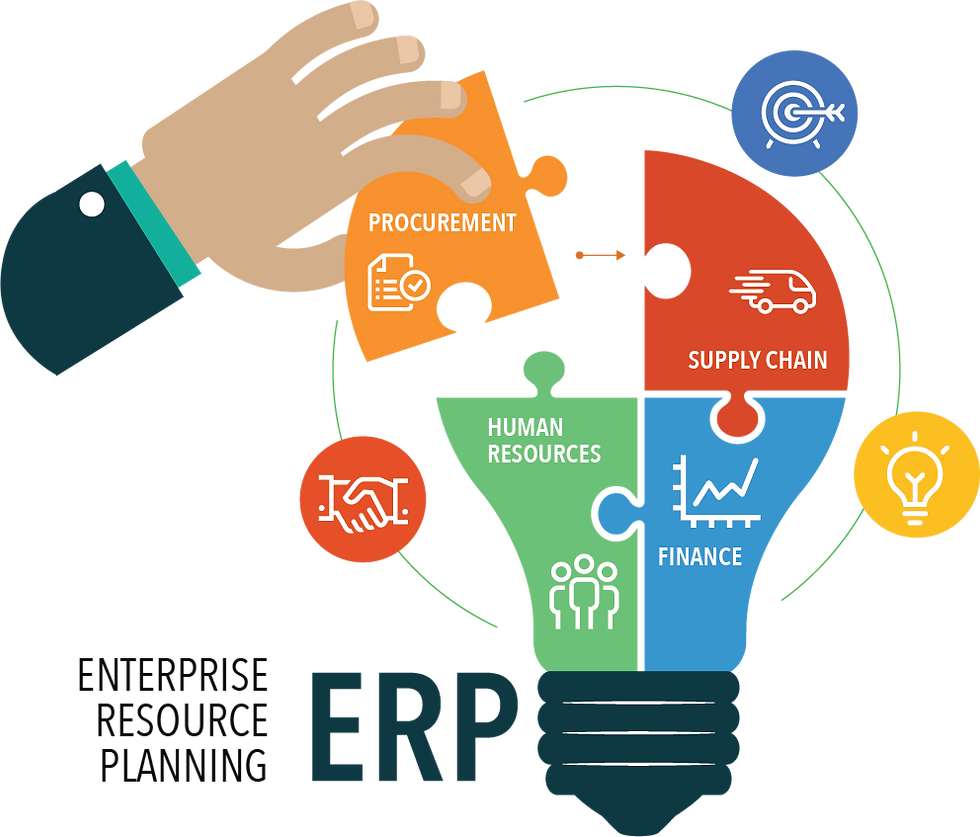Revolutionizing Education: The Comprehensive Guide to School Management Software
- solutionscakiweb
- Mar 5, 2024
- 3 min read
Introduction:
In the ever-evolving landscape of education, technology has played a pivotal role in streamlining processes, enhancing communication, and optimizing overall school management. One of the most transformative innovations in this regard is School Management Software (SMS). This comprehensive guide explores the various facets of SMS, its benefits, key features, and the impact it has on educational institutions.
I. Understanding School Management Software:
School Management Software is a robust, integrated solution designed to automate and centralize administrative, academic, and communication tasks within educational institutions. This software is tailored to meet the unique needs of schools, colleges, and universities, offering a unified platform for administrators, teachers, students, and parents.
II. Key Features of School Management Software:
Student Information System (SIS):
Centralized student profiles with academic history, attendance records, and personal details.
Automated enrollment and admission processes.
Performance tracking and progress reports.
Attendance Management:
Streamlined attendance tracking for both students and staff.
Real-time updates on attendance for parents and administrators.
Integration with biometric systems for accurate recording.
Gradebook and Exam Management:
Digital gradebooks for teachers to input and manage student grades.
Automated exam scheduling and result generation.
Performance analytics for individual and class-wide assessment.
Communication and Collaboration:
Secure messaging platforms for teachers, students, and parents.
Announcements, event calendars, and newsletters.
Parent-teacher conference scheduling.
Financial Management:
Fee collection and invoice generation.
Expense tracking and budget management.
Financial reports for administrators and stakeholders.
Library Management:
Cataloging and tracking of library resources.
Online catalog access for students and staff.
Automated book check-in and check-out processes.
HR and Staff Management:
Employee profiles with qualification and experience details.
Leave management and attendance tracking for staff.
Performance appraisals and professional development tracking.
III. Benefits of School Management Software:
Efficiency and Time Savings:
Automation of routine tasks reduces manual workload.
Streamlined processes result in time savings for administrators, teachers, and staff.
Enhanced Communication:
Improved communication between teachers, students, and parents.
Real-time updates on academic progress, attendance, and events.
Data Accuracy and Security:
Centralized data storage ensures accuracy and eliminates data redundancy.
Security features protect sensitive information and ensure compliance with data protection regulations.
Improved Decision-Making:
Data analytics and reporting tools enable informed decision-making.
Insights into student performance and institutional trends.
Parental Engagement:
Increased involvement through online access to student information.
Regular updates on academic performance and school activities.
Scalability and Flexibility:
Adaptable to the changing needs and size of educational institutions.
Scalable to accommodate growth and additional features.
IV. Implementation and Adoption:
Needs Assessment:
Identifying specific requirements and challenges within the institution.
Customization of the SMS to meet the unique needs of the school.
Training and Support:
Comprehensive training programs for administrators, teachers, and staff.
Ongoing support to address any issues and ensure smooth adoption.
Integration with Existing Systems:
Seamless integration with existing software and hardware infrastructure.
Data migration and transfer from legacy systems.
User Feedback and Iterative Improvements:
Gathering feedback from users to identify areas for improvement.
Regular updates and enhancements based on user suggestions and evolving needs.
V. Challenges and Considerations:
Cost and Budgeting:
Initial investment and ongoing maintenance costs.
Budget considerations for training and support.
Data Security and Privacy:
Ensuring compliance with data protection regulations.
Implementing robust security measures to protect sensitive information.
Resistance to Change:
Overcoming resistance from staff and stakeholders.
Communicating the benefits of SMS for a successful transition.
Technical Infrastructure:
Assessing the compatibility of existing hardware and network infrastructure.
Upgrading or enhancing technical capabilities if necessary.
VI. Case Studies: Real-World Impact of School Management Software:
Success Stories:
Highlighting institutions that have successfully implemented SMS.
Showcasing improvements in efficiency, communication, and overall performance.
Challenges and Lessons Learned:
Examining instances where challenges were faced during implementation.
Identifying key lessons learned for future implementations.
VII. Future Trends and Innovations:
Artificial Intelligence in Education:
Integration of AI for personalized learning experiences.
Predictive analytics for student success and early intervention.
Blockchain for Academic Credentials:
Utilizing blockchain technology for secure and verifiable academic credentials.
Streamlining the verification process for employers and higher education institutions.
Mobile Accessibility:
Increasing reliance on mobile platforms for access to SMS features.
Mobile apps for parents, students, and teachers for on-the-go information.
Virtual and Augmented Reality in Education:
Exploring the potential of VR and AR for immersive learning experiences.
Virtual classrooms and interactive educational content.
VIII. Conclusion:
In conclusion, School Management Software stands as a transformative force in the educational sector, revolutionizing the way institutions operate, communicate, and grow. By leveraging the key features and benefits of SMS, educational institutions can not only enhance their administrative processes but also create a more engaging and efficient learning environment for students. As technology continues to advance, the future of education is undoubtedly intertwined with the continued evolution of School Management Software.




Comments